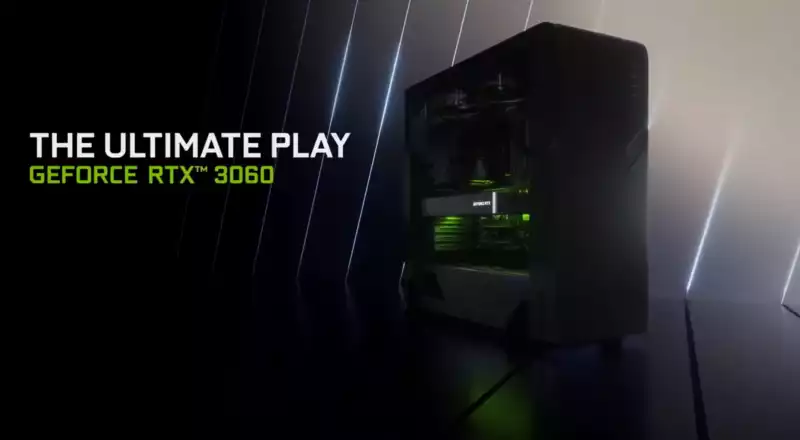Nvidia's new GeForce RTX 3060 is coming soon. Cue great rejoicing. After all, the RTX 3060 brings Nvidia's amazing Ampere architecture down to $329, a price that even us mere mortals might actually be able to afford if stock is available.
In fact, the RTX 3060 will certainly sell in larger quantities and be used by more gamers for real games than blockbusters like the Nvidia RTX 3080 and RTX 3090, which a year later rank high in Steam's hardware survey In a year's time, the top ranked hardware in Steam's hardware survey will be the $329 (£299) RTX 3060, not the $1,500 Nvidia RTX 3090.
Unfortunately, the RTX 3060 seems to have the potential to disappoint. The first indication comes directly from Nvidia in the form of a benchmark graph included in the RTX 3060 section of yesterday's CES stream.
Only two of the four game benchmarks are running in traditional raster mode, as opposed to ray tracing and Nvidia's DLSS technology running. The performance jumps for the rasterized games on the left side of the graph, and for the RT+DLSS titles, appear to be quite modest.
Digging a little deeper reveals why the RTX 3060 may be less of a leap than the other members of the new Ampere range. For starters, it is worth understanding that the RTX 3060 has little to do with the Nvidia RTX 3060 Ti. The new RTX 3060 vanilla is based on the smaller and cheaper GA106 GPU, as opposed to the GA104 found in the RTX 3060 Ti and Nvidia RTX 3070.
One direct impact is that the memory bus width has been reduced from 256 bits to 192 bits. However, the 2060 was also a 192-bit board. Instead, the details of the GPU specs are worrisome.
So far, Nvidia has only released partial specs. What is certain is that the RTX 3060 has 3,584 CUDA cores running at a boost clock of 1.78 GHz. The RTX 3060 Ti, on the other hand, has 4,864 cores running at up to 1.67 GHz and a 256-bit memory bus. This is quite a big step forward.
But arguably more important is the generation comparison. The old RTX 2060 has 1,920 cores at up to 1.68 GHz, while the RTX 2060 Super has 2,176 cores running at up to 1,650 MHz.
At first glance, this suggests a big jump up with the new RTX 3060. However, we know that Ampere has increased the core count significantly, but not by much in other areas such as texture units and ROPs.
Anyway, when you do the math, the RTX 3060 looks impressive, with about twice the raw shader power of the RTX 2060, thanks to all the CUDA cores. The problem is that when comparing RTX 3070 to the previous generation RTX 2070, the raw shader power is close to 3x; the same goes for RTX 3080; RTX 3080's shader power is about 3x that of RTX 2080.
So far, Nvidia has not released final specs for the RTX 3060's texture units and render output. However, using the CUDA core, texture, and ROP partitioning and ratios of other Ampere GPUs as a reference, based on the RTX 3060's 3,584 CUDA cores, it will have fewer texture units but slightly more ROPs than the RTX 2060.
Considering that the RTX 3060 is clocked only slightly higher than the RTX 2060, it is easy to see that traditional raster-based games, as opposed to games that perform ray tracing and DLSS, will likely not see significant performance gains.
The pricing of the RTX 3060 is another hint that expectations must be tempered. Everywhere we look, GPUs are priced higher. However, the RTX 3060 is priced at $329, while the RTX 2060 was $349 at launch.
The saving grace here may be Nvidia's efforts to extend DLSS to non-raytraced games, such as the recently announced CoD: Warzone. RTX 3060 may outperform RTX 2060 in real world games.
In any case, the benchmarks will eventually reveal all, and if it delivers RTX 2070 Super-level performance for a little over $300, it's a win. But this is just an early reminder that the RTX 3060 may look less impressive on paper than the other members of the Ampere family, including the RTX 3060 Ti.
Both use very different GPUs at their hearts, so the extra $70 for the Ti version may be well worth it. And given that the RTX 3060 is inexpensive enough to be widely adopted, that may be a shame.
.

Comments